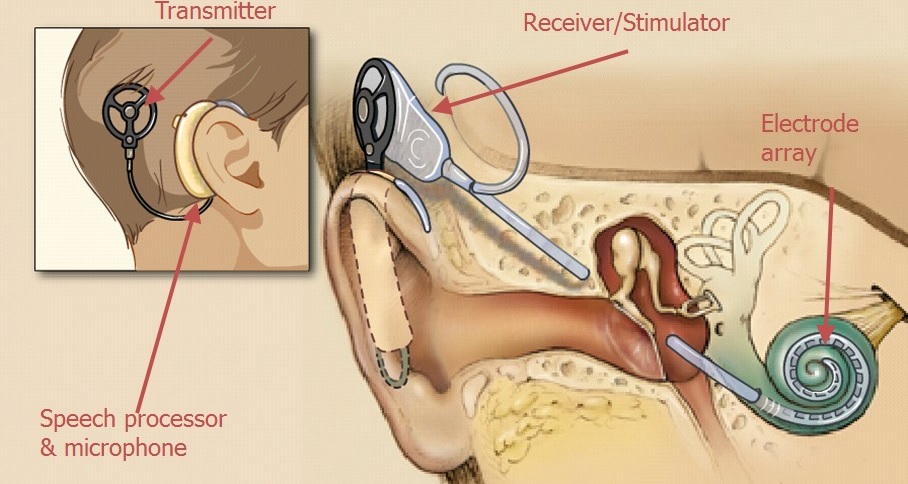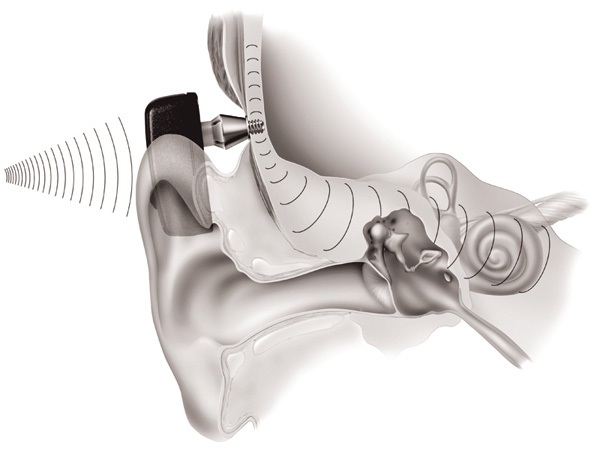Hearing loss can greatly affect our quality of life. It causes communication barrier in adults and problem in speech and language acquisition in children. The most popular method used to restore hearing ability in people with hearing loss is amplification device.
BUT why the conventional hearing aid is sometimes not good enough?
- In healthy ear, sound is collected by the external ear and amplified by the middle ear. The hair cells of the inner ear act as transducers, converting acoustic energy into electrical activity that is carried to the brain through the auditory nerves.
- However, in very severe hearing loss, the hair cells are mostly damaged, and acoustic signals cannot generate electrical activity in the auditory system. Therefore hearing aid will not help much in individual with profound hearing loss.
Another option available in current technology is implantable hearing device. However, it is important to understand that these amplification devices do not restore hearing. They are only tools that allow sound and speech to be processed and sent to the brain.
1. Cochlear implant
A cochlear implant is a small electronic device that helps people hear. It can be used for people who are deaf or with hard of hearing. A cochlear implant is different from hearing aid because it is surgically implanted and works in a different way.
It consists of 2 parts.
A. The Internal part – implanted into the bone (temporal bone) behind the ear.
B. The External part -removable and placed on the surface of the skin/hair at the back of the ear.
Sound is picked up by a microphone and sent to a speech processor which is located behind the ear. The sound is analyzed and converted into electrical signals and sent to a surgically implanted receiver which then transmitted electrical signal to the inner ear. From there the electrical impulses are sent to the brain.
 |
| Source : http://www.mrc-cbu.cam.ac.uk/ |
The criteria for cochlear implant
The criteria for cochlear implant candidates are changing over time as the technology revolves. Both children and adults can be candidate for cochlear implant either they may have been born with deafness (pre lingual) or acquired hearing loss after learning to speak (post lingual). The criteria may vary in different countries, but they are based on similar guidelines:
- The candidate has severe to profound hearing loss in both ears and not benefiting from optimally fitted hearing aid even after using it consistently for 3 to 6 month.
- Candidate is using verbal language to communicate with others
- Candidate possesses normal cognitive and psychological development.
- Candidate has no medical contraindication to undergo implant surgery.
- Candidate and family members have realistic expectation on cochlear implant and remain so actively participate in post rehabilitation in order to ensure better success of the implantation.
2. Bone Anchored Hearing Aid
Bone Anchored Hearing Aid also known as BAHA. It is implantable device which directly stimulate the inner ear passing the ear canal and middle ear through the skull. It is an alternative for those who cannot wears regular hearing aid.
Candidates for BAHA include those with chronic otitis media, congenital atresia, various cranio-facial syndromes such Treacher Collins and Goldenhar, cholesteatoma and middle ear dysfunctions and diseases. The hearing loss can be either single sided or bilateral.
The device is composed of three main parts:
- A titanium implant which is fixed in the skull by surgery
- An external abutment like a bridge that connect the sound processor to the titanium fixture
- A sound processor which is the hearing aid part of the whole system involves in input sound processing and amplification.
The stimulation of sound by the vibration from the sound processor onto the skull, are transmitted to the abutment, to the implant, to the bone, and then to both cochlea across the skull. Direct bone conduction produces clear sound to the cochlea.
 |
| Source : http://www.cochlear-europe.com/ |
3. Middle Ear Implant
Middle ear Implant is another alternative to conventional hearing aid. It collects sound and converts into mechanical vibration. It may be used for those with sensorineural hearing loss, conductive hearing loss, mixed hearing loss or single sided deafness. However, the selection criteria for middle ear implant candidates are very strict and require serious discussion among ENT Surgeons and Audiologist. Following are the criteria for the middle ear implants, such as;
- People with obstruction in the outer or middle ear.
- People who cannot wear hearing aid or ear mold due to ear or facial malformation.
- People who are unable to benefit from conventional hearing aid.
Evolution in medical technology enables us to have various options in hearing amplification. Therefore, when one is not benefiting from conventional hearing aid these are other optional amplifications available. Please seek your nearest hearing care professional to discuss about it.
Reference
- http://hearing.health.mil/DiagnosisTreatment/TreatmentOptions/BoneAnchoredImplant.aspx
- http://hearing.health.mil/DiagnosisTreatment/TreatmentOptions/MiddleEarmplant.aspx
| Last Reviewed | : | 23 March 2016 |
| Writer | : | Farah Dalila bt. Mohamad Tahir |
| Accreditor | : | Khadijah Azura bt. Salim |







